|
Race Report by Triathlete Matt Ironman Indiana Recap October 2, 2021 This will be the recap of the day I attempted, and subsequently successfully completed, my first full Ironman in Muncie, Indiana on Saturday October 2, 2021. The day was Saturday, October 2, 2021. I had looked forward for months to the day I was going to become an Ironman. I signed up on April 5 of this year. At the time, 6 months seemed like a lifetime away. It was something I had wanted to do for many years. I still remember watching the guys on TV in the 80’s, thinking it would be great to do that but was physically impossible for me to achieve. Fast forward to roughly 2004. I watched St. Anthony’s triathlon, a very popular Olympic Distance race in St. Pete. I watched the people running the biking by the club. I was in awe. I did not know at the time about types of races/distances or anything at all about bikes. I was very intimidated by what I thought were these “Elite Athletes” doing a triathlon. It turned out a sales rep I worked with Tony, was into triathlons. He told me I could do one. I did a sprint and it was incredible to finish. As the years went on, I started doing 5k’s, then 10k, half marathon and 2 full marathons. I ended up doing 6 St. Anthony’s races, then a half ironman with Jim Parks in 2011. It was the Musselman in upstate NY. To this day, it is by far the hottest race I have ever done. Other than the Ironman, it is also the most well put together race I have done also. Leading up to the Ironman, I hired a swimming coach. Kaelyn was so good. She is about 22 years old, so taking orders from someone that much younger was interesting to say the least. She did great things for me. A few times, I wanted to hold her under water. I did not want to drown her necessarily, just hold her under until she thought she was going to drown. Obviously I am being facetious here. She was tough, giving me the same drills she was given in college. Kaelyn was able to get me in a position to do something I thought was impossible; swim 2.4 miles. I also hired a triathlon coach at the urging of Jim and Harold. Jay Hamvas is a remarkable human and an excellent coach. He was someone I could relate to, someone that was able to push without defeating me. He asked a lot of questions through the weeks we worked together to learn as much about me as he could. In return, whenever I wrote about my workouts, I tried to give him as much information as I could. I did this to help him learn more about me. I figured the more he knew about me and what I felt, the more successful he would be at coaching me. This was not easy to do. I had to more or less let my entire guard down in order for this to happen. At least for me, it was not easy. The workouts leading to race day were very difficult at best. Starting at the end of July, I was traveling 5-6 days per week for work. It ended up being the toughest opening season our company had ever seen. Obviously I had no way of knowing this in April when I signed up for the race. I had to bring all of my workout clothes, find the YMCA before I booked my hotel reservations and follow through on as many workouts as I could. It was a privilege to work out at these YMCAs. I met, for the most part, some incredible people. As in life, there is a certain percentage of people that are less than incredible. I met them too, unfortunately. The difference this time was that I was not going to let the shitty people get to me or piss me off. I had a goal and they didn’t. When someone would be rude to me or just an asshole in general, I would think “I am training for an Ironman. The odds are good that you are not”. I seldom said anything and just moved on about my business. It took a ton of work and sacrifice to get to race day but it happened. The night before the race, I felt very confident I had not forgotten anything. I had made peace with the fact that things were going to go wrong over the next couple of days. When I checked in for the race, it was an incredible feeling. It was beginning to get real. I was definitely nervous. I had butterflies in my stomach, but I was not afraid. For the most part, I was very comfortable being there and I felt like I belonged there. As with any triathlon I have done, there are plenty “Macho Guys”, “Meatheads” or whatever name you can place on them. Those guys really do not matter. I pay them zero attention because they do not warrant it. Yes, we all want to do well. No, we are not going to win anything. These guys take themselves too seriously and are not worth wasting my breath on. Most of the people I met were very cool. I heard one guy say he was from Greenville, SC. I am from Asheville, roughly 50 miles from there. He was a cool guy and was there with his wife. The pre race information session was very informative. I am glad I made the time for that. One lady in the audience 2 rows in front of me referred to the emcee as “terrible”. I quickly let her know that he is doing the best he can and to stop heckling him. I also told her all the information is in the Athlete’s Guide. She stopped. I felt like I had to say something. The guy was up there doing the best he could to help us, so the least we could do is to respect him and listen. My timing bracelet on my ankle did not leave my ankle at all. I slept with it and showered with it. I was not going to lose it. I had dinner with Rachel, my dad and stepmom. I had simple grilled chicken with broccoli, baked potato and pasta. I had been eating like that all week so I was not going to change now. I actually did get to sleep for approximately 5 hours. I was very surprised. I finished getting all my stuff together and drove to the race site. We left at 4:10 AM. I wanted to get there early to get a closer parking spot as well as be relaxed in the morning and not rushed. I ate 2 cinnamon raisin bagels with blueberry cream cheese. They felt good in my stomach. I knew there was plenty of time for them to properly digest prior to the swim. It was chilly when we arrived, probably around 55 degrees. I went to transition to double check my bike and the air in the tires. I dropped off my personal needs bags for the midway points on the bike and run. I was surprised at how quickly the time had passed. I put on my wetsuit, put I dropped off my bike and run transition bags at my bike in transition and began to make my way to the swim start. The energy was something I have never felt. It was actually very quiet. I was very confident. While standing chatting, waiting for the swim start, I reached up to my head to check for my goggles. They were not on my head! At this time, it was around 7:00. The race was going to start at 7:30. I went from being completely calm to having a strong sense of urgency. I grabbed the truck keys and sprinted to the truck. They were not there. At this point, I had resigned myself to doing the swim without goggles. I was completely ok with that. This was the first thing that went wrong and I was rolling with it. I wanted to check transition to see if they were there. They were. I put them down while arranging my transition area. I grabbed them and went back to the water. I eventually found Rachel so I could give her the keys back. I was good. I was calm. I was confident. Like I said, I was totally ready to swim without them. Now I had them so I was good. In line I started talking to a guy named Chris Young. He was a good guy. It was his first full Ironman too. He had a nice way about him. He was very welcoming and had a confident vibe. We chatted until we went off on the swim. When I was in the chute to start the swim, I realized I had not stretched in all the confusion around my goggles! I was still confident. I had a few minutes of not talking to anyone prior to getting in the water. I could not help to think that I was doing an Ironman. After all the years of talking about it, thinking I could not achieve it and doubting my ability, it was here. This was it. Thinking about the race in its entirety gave me goosebumps. I kept thinking back to the day I signed up. The moment I signed up, I pictured myself crossing the finish line. When the swim started, I felt good. Very good. I was very confident after the first 100 yards or so that I was going to have an excellent swim. After the first couple of hundred yards, I realized I had to pee. Bad. I stopped to tread water a couple times but it didn’t work. When I turned the first red buoy I found a kayak. I grabbed onto it and went to the bathroom. It was a relief. I then went about my way. It was the first swim of my life that I actually passed people. It felt good. I knew then that all the practice was paying off. I was comfortable and was concentrating on being consistent and the same speed. I had avoided the temptation to start out fast and I was very happy with that. It was a 2 loop swim. We had to swim 1.2 miles, get out of the water and run 20 years and get back in. When I went in for the second loop, I knew I was going to succeed at defeating the swim. One guy came up behind me and grabbed my foot. I stopped kicking, as I did each time I felt a swimmer behind me. I did not want to kick anyone in the face by accident. The guy came up beside me and pushed me at my knee; again on my hip. I swam to the side to get away from him. He came up beside me and pushed at me around my shoulder. I gave him an elbow to the head. He did not bother me after that. That is not my style and I have never done that before. He wouldn’t give up and was malicious in his actions. Again, after a few hundred yards, I had to pee again and bad. The good news was that I was hydrated properly. Again, I felt very good about that. For me, it was difficult to maintain focus on my stroke. I tried to stop a few times to go but to no avail. I swam until I could stand up at the end of the swim. I stood up to my neck in the water and went. I faced the swimmers coming at me so I could dodge them. My swim was 1:38 something. I was very pleased with that. I figure I wasted 5-6 minutes trying to go to the bathroom. Again, something went wrong and I plowed through it. In my eyes, I had completed what I thought was the part of the race (For me at least) that could have forced me to DNF. I rationalized in my mind that I was 1/3 of the way done. I had to do that to keep going and not think of the enormity of what was to follow. I was going to take my time in transition, reverting to Harold’s wisdom of making sure everything was right, as it is a long race. We had to go up a long hill to get back to transition and get on the bike. I walked fast and jogged a little. I removed my wetsuit, dried off, wiped the sand off my feet and ate an apple, as I dressed for the bike. I made sure I had all the fuel I needed for the bike. It was going to be a long bike ride, probably around 7 hours. I was comfortable getting on the bike. I had body glide in all areas I thought I needed it so I was good. I ran my bike out of transition and started. In the beginning of the bike, I felt great. My pace was strong. I was thinking about how glad I was that I had done squats for the past 2 months or so. At the same time I wished I had started doing them sooner. I thought I was going to be chilly, but in actuality I felt very comfortable. At this point, I was relieved I did not wear long sleeves. The bike course was great. The corn and wheat fields seemed to go on forever. They were one after the other it seemed. As I was biking I wondered if I had eaten a loaf of bread, pasta or any other food item that was grown in this area. To me, it signified small town America; farmers trying to make a living that provided us with food from their crops. The corn and wheat fields literally went right up to the homes that owned that property to maximize the use of the land. We saw farmers out there cutting down the corn, harvesting the wheat. It was incredible. This is where it starts to get food on the table for us Americans. A few hours into the bike, it started to cloud up. Then it started to rain slightly. It seemed like there was a crosswind at all times. I do not remember there being a tailwind! The windmills were incredible. They are so big when you are up close to them. You know it is windy when they are really turning! The bike course was not bad. It was not terribly hilly. Several climbs were long and gradual. The elite athletes were so fast. A few times, when I felt like I was going fast, one of them would pass me and I all of a sudden felt like I was riding through wet cement. The special needs came at a great time. I ate my apple and refilled my drink containers. I had dropped my bike bottles on the back of my seat twice, so I just left those 2 by the garbage can. I knew there were enough hydration stops on the course that I really only needed two of them. By the time I arrived at the special needs stop, it was pouring. Some of the volunteers were flustered, wet and cold. With the wind, it was tough there. I had to press on though. I was chilled and I knew I still had 50+ miles to go. I looked at it like I was halfway there. I have to look at things in a positive light and percentages to keep looking forward. My neck was really bothering me. When I stop and stand, it immediately feels better. I stopped to go to the bathroom twice on the bike so I felt like I was hydrating properly. Each time I stopped, the volunteers were incredible. Their spirit was literally unbreakable. Every single time I passed them, I would thank every single one of them. I also thanked every city/county worker/cop because what they did to put this race on was incredible. In order for the race to be successful, literally hundreds of people had to work together and do their part. I thought about this as I rode. I also started singing Bon Jovi’s Wanted Dead or Alive. I do not know why, other than I used to listen to that song before soccer games in high school. I started counting the miles down, in percentages. I would think about what percent I had completed and what percent I had still to go. I was still very confident the whole time and knew I would not be denied. Not today. I was getting passed by a guy one time. He did not say “On your left”, like you are supposed to do. He didn’t say anything at all. I was passing a biker at the same time. He went in between us, almost wrecking both of us. I did not say nice things to him. He was one of those macho guys I was referring to earlier. The last 5-6 miles of the bike was on a paved greenway/trail. One of the women I passed was complaining that it was all uphill. I almost told her where I was from and that where I live are some very difficult hills! Biking in Indiana was a walk in the park compared to Western North Carolina! I felt good about what I had consumed during the bike. I drank 5 bottles of Gatorade Endurance (I really needed to drink 7). It was tough to drink when it was cold. I ate at least 400 calories per hour on the bike as well. I felt full but comfortable. From miles 30-60 or so, I had a wicked cramp on my right side. I made it go away by eating mustard packets and the Kaopectate in my special needs bag. I kept talking to that cramp, telling it that it had to go away, it was not going to ruin my day and then I ignored it. It was gone. Again, something went wrong and I pushed through it. I was not going to be denied. I was relieved that the bike was over. It was grueling. For me, it ended up being the toughest part of the race. I actually did better on the swim comparatively to the rest of the athletes. I saw Rachel on the way into transition. She was such a welcome sight, such a ball of energy. I also took my time in transition, changing my socks, drying off a little and redoing my little running bag to make it good for the run. I brought gels, honey stingers and shot blocks. I figured I would need all of them. I also ate another apple, which really hit the spot. As I left transition, Rachel was there again with my Dad and Stepmom. My dad was sporting his new Ironman hat. Their energy was incredible and very encouraging. My dad slapped/shook my hand and I was off. I walked the first 400 yards or so getting my head in the place it needed to be in. I ate a honey stinger and started out on a slow jog. Fortunately, my calf was doing well. I had no issues from the pulled calf I had been nursing along for several months. I was completely relieved. I picked up the pace, eventually running a 9:19 mile on mile four. I looked at my watch and realized I had to slow down if I was going to finish. I settled into a good pace that worked for me, stopping at each hydration stop to walk. I knew that was going to work for me. It was an out and back course, 2 loops. It was brutal to hear the announcer telling people “You are an Ironman” as we were leaving transition for the marathon but I knew I had to get past it. Seeing the mileage markers that were from miles 14-26 on the first loop was also rough mentally. Again, I had to get past that and I did. It was interesting watching the other athletes. Some were really struggling, some were cruising. I ended up talking to a younger Hispanic guy along the course. We kept leap frogging each other. He had on a Carrhart hat on backwards. He was a very humble guy and cool to talk to. The volunteers again were very energetic. They still had the same tenacity late at night as they did early in the morning. At some of the stops, they had huge Halloween decorations all blown up. Some of them had rock and roll music playing. At one point, a guy on a mountain bike was riding between all of the runners with loud upbeat music playing. It was great. Getting anything into my stomach became a chore. I choked down 2 of the honey stingers and that was the end of them. Thinking about eating a gel or shot block was out of the question. Just thinking about it was making me gag. I knew I had to keep drinking so I kept forcing down water and Gatorade. Around mile 6, I started eating potato chips and coke. That was what worked for me. At mile 4, I started feeling pain on the outside of my left knee. It was the same spot that was killing my in my half Ironman August 8th. I took some ibuprofen and told it to go away and that it was not going to derail my day. Eventually it went away. It must be that the pain died. After all, isn’t an Ironman where pain goes to die? It happened twice for me. As I neared the beginning of my second loop on the run, the announcer was louder than you could ever imagine. He kept congratulating people for crossing the finish line. It was tough to hear, but instead of saying I had another 13 miles to go, I said I had already completed half of the run. There is a big difference. I also knew I had completed a large percentage of the race. It started to get dark. I turned on my lighted vest from the Keys 100 Race. It was awesome. It did not take long for the hallucinations to set in. I was seeing “spiders” on each side of me level with my head. They were actually the shadows from my hands going back and forth while running cast by the light. It took me about 45 minutes to figure this out! I knew I was seeing things. I kept seeing people in the cornfields, animals around me and the like. I knew it was imaginary so I kept plowing through. It was very humid. It kept raining off and on, which wasn’t bad. I knew I was profusely sweating so I tried to continue to ingest as much liquid as possible. When I was about 9 miles from the finish, I could see the light shining from behind the trees from one of those large lights that were placed onto the course. The road went slightly up and to the left, then down. The light reflected up the road towards me. It was barely raining and there was fog close to the ground. I could only see the silhouettes of the runners going in each direction in the light that was shining from behind the trees. That picture will forever be etched into my memory. It was unworldly and beyond being able to describe. The last 6-10 miles were a struggle. Big surprise there, eh? I started thanking everyone who had helped me. I thought of everything I had overcome to get here. Defeating depression/my time in the hospital, almost losing my arm last year, car accident, bike accident, illnesses, traveling, demanding work schedule. I had to keep up a mindset of not quitting to keep going. The camaraderie along the course was incredible. One guy said he tried to stay with me on the run, but he couldn’t do it. He finished the race as I was turning around to do the second half of the marathon. I kept encouraging anyone I could, especially if they looked like they were struggling. (I guess that would have been everyone!) After awhile, I had to realize the reason why a lot of them are not responding is because they couldn’t. They were just trying to get to the finish, and exerting that small amount of energy to say thank you was going to take energy they did not have. I was at that point a few times so I understood completely. I began to think of all the people I had to thank and what I was thankful for. Jay, Rachel, the YMCA employees, my swim coach, Jim, Harold, random strangers at the YMCA’s, the guy in Tallahassee on the treadmill that was going to climb a mountain out west for the 3rd time at 57 years old. The list was long. My dad and stepmom volunteered to drive all the way to Indiana from Florida. That was incredible to say the least. I was thankful for the athletic ability to do an Ironman. I was thankful for being raised in a household, although far from ideal, taught us mental toughness, adaptability and perseverance. Our mother was far from perfect. Compared to or other cousins, my brother and I are what we refer to as “normal”, although the bar is set low. I was very thankful for my health. As I mentioned earlier, I had to overcome a variety of physical challenges. I was very fortunate I was able to get through them without it affecting my race. I had a chronically pulled left calf since March 2020. I pulled it playing soccer. I could not run on it until June 2020. I gradually ramped up my running mileage, getting up to 12 miles. Then in October, I pulled it again. I was good until this past June when it happened again. I had to do something to make sure I could still do the Ironman. Coach Jay helped me get through this. We went very conservative on it, until I could actually start running on it again. I learned how to push that area just enough to challenge it, but not enough to pull it again. I gradually increased my mileage, but the furthest I ran pre-race was 14 miles. I did manage to get in decent mileage during each week; I just did not get in the super long runs as I did on the bike and swim. That being said, I am more confident in my running ability than the other 2 disciplines, so I knew I could power through it. Again, I was able to persevere through that. I could not help but think about how many people were supportive of me during the entire time of training. So many people would randomly call or text to see how I was doing and how training was going. Mark Milliron, who I have known since 1993 flat out told me I was crazy for doing this. I told him I did not disagree with him. Mark is a great friend. He and his wife Carol followed me on the tracker and offered me congratulations. Paul Liptak, a good friend I have known since 1993. Jim Hopkinson “Hoppy”, that I have known since 1989 in college and who has been with me every step of the way in life, Bill Hirchert, who I met in 2011 but we are as close as anyone. Bill’s family was also very involved the day of the race as they followed me and communicated with Rachel. Terry Harding, the hardened 27 year Marine vet who always talks to me when I need it. I could go on and on. Shawn Pitts-I met Shawn when we were both working at the Swiss Hotel in Atlanta. That was September 1992, just after I finished culinary school. Somehow through the years, we have stayed in touch. Shawn is a successful small business owner and someone who I can count on. Shawn was the guy who picked me up after I wrecked my bike in May. Shawn let me know he was proud of me prior to and after the race. I don’t know how to describe it but it meant more than I can say. My brother Nathaniel checked in with me often during the months leading up to it. He is a stud athlete and is in incredible physical shape. He is much more gifted physically than I am; broad shoulders, big arms and very strong. He was texting Rachel all throughout the race checking on me. That was incredible. Then there is Jackie and Michelle, my new found sisters. Michelle and Jackie and their families followed me. Throughout the months leading up to the race, their husbands Dan and Abe also sent me letters of encouragement. During the actual race, they also followed me with their families. It was an incredible feeling knowing how much they support me and care about me and what I am doing. Jim and Harold-I just don’t know what to say. I have known Jim since college. Although I was only there for a year, somehow we have still stayed in touch. It was his idea to do my first Half Ironman in June of 2011. That is still by far the hottest race I have done. Upstate NY, record highs. We did it with 2 other guys that Jim knew. They were of course excellent people. Jim “Introduced” me to Harold in May of 2020. I was on furlough so I had a lot of time to kill. They asked me if I would do the May challenge with them, which was running each day, doing miles that corresponded with each numerical day. I was still recovering from the pulled calf muscle, so I came up with my own workout, but added to it each day. It consisted of planks, jumping rope, burpees, kettle bell swings with a 50# kettle bell and Russian Twists with a 20# medicine ball. By the end of May, I was on my way to getting back in shape. Most mornings I did not even want to get out of bed. They gave me the motivation to do it. We would share videos each day of our workouts or runs. It was very motivating. On the days where I did not want to get up, that made me get up. It was a pivotal time in my life and a time where I needed a lot of help. Harold has overcame some potentially serious health issues to get to where he is at today. He ran the Keys 100 this past May. He asked me to be on his crew, never having met me. I was very nervous about his race, as I did not want to fail him. He was successful and a friendship has ensued. Both Jim and Harold are accomplished endurance event athletes. Any time I was feeling down or needed a boost, they were there. It is hard to put into words. They have inspired me more than almost anyone in my entire life to reach for the stars, to do the impossible and think the unthinkable. This past 18 months has been one of the most important times in my life from a mental health standpoint. At this time, I am almost off all anti-depressants and mood stabilizers. Jim and Harold are huge reasons why that is even possible whether they realize it or not. That is a big deal. I never thought it would happen. It has been a battle that has had to be fought every day. Triathlon has been the catalyst for that to happen. If fighting mental health was a sport, it would be triathlon. It is not a sprint, but rather a long distance that has to be conquered a little bit at a time through perseverance and extreme focus. My times per mile were getting higher. I was now walking through the hydration stops and any inclines. I was good with this. I started talking to one woman who had done Ironman Louisville in 2019. The swim was cancelled due to algae in the water. She said she wanted to complete a full ironman so she was doing this one. We chatted for awhile. She could not run because of blisters on her feet but was going to run across the finish line. I told her I was going to walk the chute because I wanted to enjoy every last second. And Rachel-I do not think she knew what she was in for when I signed up for an Ironman. She has been steadfast in her support of me, the time away from each other supporting me in my quest for a goal that I always thought was impossible to reach. There are no words. I would have had a much more difficult time doing this without her. It was so meaningful that she actually made the time to show up to all three races (My first triathlon in May and the Half Ironman in August), all while trying to raise a 4 year old daughter and of course holding down a job. She makes it look easy. As a parent, she sets the bar very high, and sets an example for other parents to follow. I guess what I am saying is that it was shocking to see how many people cared. It was shocking to see how much people think of me. My friend Bill says if I ever have a funeral, it is going to have to be at a football stadium to fit everyone. Bill and Rachel constantly tell me how much of an impact I have on people or have had on people. They both want me to feel it. Most of the time I do not. There just seems to be an awful lot of people out there that care about my well-being and me. Doing this race brought out a lot of people to give me well wishes. I could feel them throughout the race as I thought of so many that gave me encouraging words along the way. At this point, I knew my goal was within reach. I knew I was going to finish. I wanted to really enjoy this moment and soak in every second. It was something I had worked so hard for. It was something I looked at as being impossible for so many years. I started walking more for that reason. I wanted to continue to savor that moment in time, in my life. As I neared the finish line, I could hear the announcer telling people “You are an Ironman”, as they finished. Prior to getting to the chute, we had to walk up a small incline. I got to the beginning of the chute. The lights were bright, the jumbo tron was on, the announcer was pumped up, and the crowd was rabid. There were literally hundreds of people. I had goosebumps on my entire body. Prior to walking through the chute, I just stared in amazement at the sight in front of me. I started walking with tears in my eyes. This goal, that I thought was unattainable, was now within reach. I did it. Here we are. I thought about all the inspiration I had received. Mostly, it came from Jim and Harold. I love those guys like brothers. The crowd was cheering so loudly. I have never had that in my life. The feeling was indescribable. I put my arms up in victory. The moment was something I will never forget. As I walked up the small hill to the finish line, I heard my name. He then told me I was an Ironman. I made it, this was it. I did a low fist pump and screamed “Yes!”, as I crossed the finish line. I have never had another feeling like it in my life. I hope that I get the chance to do another one. I hope that I inspired someone that heard about it. Many people inspired me. My mental health improved dramatically during the training for the race. I went from 2 years ago, thinking I would not survive another day/week/month to training hard for a race I wanted so badly to be successful in. The transformation has been incredible. By the end of December 2021, I will be prescription drug free regarding anti-depressants and associated drugs. That is a big deal. It is something I never thought possible once I started taking them 9 years ago. I am not against prescription drugs, as they served their purpose. Their main purpose was to keep me alive. They did that, even if it was barely. I understand every day that I should not be alive. I know that. However, Ironman made me feel more alive than I have felt in a long time. I want to get to the point again where when I get up in the morning, I say, “I am going to attack this day”. It has been many years since I have felt that but I think it is within my reach. After all, I finished an Ironman so anyone is possible. After Ironman, I will never be the same. I will never look at life the same. I will never forget 10-2-201 or 14:17:33. I now know that anything is possible. I know that I am capable of so much more than what I originally thought. I just wish I had done an Ironman when I was 30 instead of 50 so I could recognize that potential at a younger age. I think of all the athletes that were out there that day. I think about how they challenged me, how they helped change me, how they encouraged me when my mind started wandering. I will never be the same because to me, I did the unthinkable. I still think about the distance I covered and literally wonder how in the world I did that. A piece of me will always be in Muncie. I think Harold was right when he said “Ironman is where pain goes to die”. I did not necessarily understand or believe that until I was a few weeks removed from the Ironman. I do now. Whole heartedly. My pain is left in Muncie. Part of me was left on the course. I saved a few pieces of grass from the transition area. When I get around to it I will put it in a shadowbox or whatever I put all my race paraphernalia in. Ironman-We did the impossible……..Incredible job Coach Jay! Coaches notes:
Matt's race report and personal journey brought back so many memories of my first full Ironman. Life changing indeed! Matt's perseverance and determination were amazing and inspiring to be a part of. We can truly accomplish whatever we set our heart and mind to complete. Matt is the perfect example of this. I'm grateful and honored that he allowed me to be part of his Ironman journey. Congratulations Ironman Matt! Coach Jay
0 Comments
Welcome to the Third installment of a 5 part Beginners Series. You’ve decided you want to do a Triathlon and you’ve picked out your first race. So now it’s time to start training. Just like all the variables in picking out a race, there are just as many variables in setting up a training plan for your race. What is your athletic background? Do you have a cardio base already? What distance race are you training for? How many weeks until your race? How many hours a week do you have available to train? These are just a few of the questions that a qualified Triathlon Coach will ask. Obviously, I recommend you get a coach. There are so many things to learn about in the sport of triathlon. A coach will help teach you just the things you need to learn to get you trained for your first race. Then as you are ready, your coach will help you progress in the sport. A good coach will help keep you motivated, accountable, healthy, and get you prepared physically and mentally for your race. Having a plan is one of the most important components of successfully training for your first Triathlon. By plan, I’m referring to a schedule of workouts written out for each week of your training. Do not expect to “make it up as you go along” and then have a successful race. A proper training schedule will include a Base, a Build, and a Taper phase. It will include workouts for swimming, biking, and running. Ideally, you’ll be working with a coach that will supply you with a weekly schedule that is designed specifically for you. It will take into account your current fitness level, work schedule, available hour to work out, etc. If you have chosen to train without a coach, you can find generic training plans online for various distance triathlons. Try to find a plan that best fits your life and triathlon goals.
Whether you decide to hire a coach or not, look around for a local Triathlon Club. Many clubs will offer group training for members. Clubs are generally very helpful to new triathletes. Club members can offer helpful insights into training and racing. If there are no local Triathlon Clubs available then reach out to friends or co-workers that have experience in Triathlon. Remember you don’t need a bunch of new equipment for your first race. Many athletes get caught up in wanting new gear that they lose sight of the goal… which should be to have fun and complete their first Triathlon. So, make sure keep it simple for your first race. Concentrate on the training and not so much on the gear. That being said, try to train with what you plan on using for race day. Make sure to train your weakness. Triathlon is 3 sports and many new (and veteran) triathletes make the mistake of neglecting the sport they like the least or aren’t the best at. Sure, if you’re a runner it’s easy to spend more time training for the run. But you will be better served by training for the sport that you are the weakest in. Most (not all) runners aren’t good swimmers and most (not all) swimmers aren’t good runners. Point is, it’s really hard to be great at swimming, biking, and running. So spend more time training for the sport you can make the most gains in. Practice transitions. This is often over-looked in generic training plans. It doesn’t matter if you are competitive or not, transitions are an important part of Triathlons. Poorly executed transitions are a waste of time, energy, and can be stressful. Having to transition from swim to bike and then bike to run will be something completely new to the beginner triathlete. You can practice transitions just by setting up in your driveway, out of your car in a parking lot, or just about anywhere with a little open space.
I also recommend to all triathletes to train on the race course when possible. But new triathletes especially can gain a lot of confidence by swimming, biking, and/or running on the race course during training. While training for any race isn’t (and shouldn’t be) easy, you should make sure to have some enjoyment and fun. Triathlon can be a very rewarding endeavor. Embrace the challenge and the journey. Good luck with your training! Stay tuned for the next installment, “First Triathlon - Race Day”, post 4 of this 5 part series. Coach Jay Welcome to the Second installment of a 5 part Beginners Series. So, you’ve decided you want to do a Triathlon? I recommend picking a race as the next step. As I discussed in the previous post in this series, there are a lot of options to consider when deciding on a race. But once you decide to do it, pick the race, add it to the calendar, then it will give you the motivation to start training for it. With so many variables in picking your best “First” Triathlon, it will really come down to individual choices. I’ll cover some of these variables in no particular order because only you can decide which of these are most important to you. Are you ready to take on all 3 sports? If not, there is nothing wrong with joining a relay team and just doing one leg of the race: swim, bike, or run. Doing so will allow you to experience the race without having to train for all 3 disciplines. Not all races have the relay option so make sure to research that. Some races have Facebook pages and people will post that they’re looking for another member for their team. Or form your own team with friends or co-workers. 2 out of 3 ain’t bad! If you aren’t ready for all 3 sports then consider doing a Duathlon, Aquabike, or Aquathon. Not all races offer these options so there might be fewer races to choose from, but these are a great alternative to doing the full Triathlon. Duathlon is run-bike-run. Aquabike is swim-bike. Aquathon is swim-run. There are many different lengths and combinations available so do your research and find one that fits your needs. Swimming is probably the biggest reason many athletes don’t get into the sport of Triathlon. It can be intimidating and scary for cyclists and runners. The reality is, swimming is probably the best cross-training sport a cyclist and runner can do. The low impact nature and buoyancy in the water make swimming the perfect rehab and active recovery exercise we can do. But swimming is also the most technical and hardest sport to master of the 3 disciplines….. unless you grew up swimming. In which case, you can skip this paragraph LOL. There are 2 options when choosing a race with regards to the swim leg of a Triathlon, Pool Swim or Open Water Swim. Both have their pros and cons. Pool swim races offer a clean, clear environment and lane lines to keep you swimming straight. But pool swim Triathlons can be crowded and often result in waiting in long lines to start the race. Open water swim (OWS) races are more challenging when you have a fear of water or what lives in the water. But there are also different types of open water swims available, like rivers, lakes, ponds, waterways, and ocean. Many of the OWS races have wave starts that reduce the amount of people starting at once, hence reducing the amount of bumping and melee. Have a mountain bike? Great! There are Off-Road Triathlons available. XTERRA is the best known off-road triathlon organizer. They offer races all over the world. And like Ironman, XTERRA offers a chance to qualify for the World Championship held in Hawaii. All XTERRA races are open water swims but many are in quiet rivers and lakes. Another option is riding the mountain bike for a regular on-road Triathlon. Some smaller local races offer a “fat tire or mountain bike” division. Pick the distance of the Triathlon based on your strengths and previous athletic accomplishments. Many Triathletes do start with the shorter Sprint distance, then over time try doing the longer Olympic/International distance. But there is no rule that says you “have to” do it that way. I know several athletes that did an Ironman distance as their first Triathlon. I don’t necessarily recommend doing that, but my point is that you should pick the distance race that you feel motivated to train for and complete. Another thing to think about when choosing your first race is the location. I generally recommend picking a race that is close to where you live. There are several reasons for this. First, it’s best if the terrain you will be training on matches the terrain of the race. Training in the flat and racing in hills can make for a rough first triathlon experience. Secondly, traveling to your first race adds other logistics that can make your first race experience more stressful. If you choose to (or have to, due to race availability) travel to your first race then book accommodations early and as close to the venue as possible. Consider picking a race in a town where you have family or friends that will come out and cheer you on.
If you are lucky enough to live in or close to an area with a Triathlon Club, many times the club may sponsor a local race. Typically, these races are very beginner friendly as most Triathlon Clubs love to help foster the sport and encourage new athletes to the sport. Here are a few websites to help you find available races. www.active.com www.trifind.com www.triathlete.com www.setupevents.com (North and South Carolina Races) www.xterraplanet.com Whichever race you choose, make sure to have fun going into this new challenge. Stay tuned for the next installment, “Training for your first Triathlon”, post 3 of this 5 part series. Coach Jay Welcome to the first installment of a 5 part Beginners Series. Before you can decide if you want to do a Triathlon, you need to know what a Triathlon is. Dictionary.com defines Triathlon as “an athletic contest comprising three consecutive events, usually swimming, bicycling, and distance running”. While that is the definition of a Triathlon, I think there is more to the sport than just that. There are many other aspects of Triathlon that make it a unique and exciting sport. Even though you are racing with other Triathletes, it is an “individual” sport. In other words, during the race, you can’t receive any outside help. The only people you can accept help from during the race are the official volunteers. No pacers on the run, no drafting on the bike, and no items can be passed to you from family, friends or coach. The longer the Triathlon is, the more important your preparation becomes. Pre-planning is key because once the race starts you are on your own. Because Triathlon is such an individual sport I think it can create less pressure to compete. Sure, there are many athletes that race to compete, including myself. But there are just as many athletes that race just to complete. I’ve found that the longer the race is, the more that is true. There is something very rewarding about getting outside your comfort zone and trying something new. Great satisfaction can be had by signing up, training for, and completing a Triathlon. For many athletes new to Triathlon, it is a true challenge to train for 3 different sports. It’s what makes Triathlon so unique and also what makes it so fun. Many athletes find themselves cross-training due to injury, rehab, or a need to change things up. So they find themselves biking or swimming or running in addition to their “main” sport. Then the next logical step is to put it all together and do a Triathlon. Another great thing about Triathlon is that there are different ways to be competitive. You can be great in one discipline and just ok in the others or just good in all 3. Whether you want to be competitive or not, the over-all stress on the body is less than training for just 1 discipline. Your training workload gets spread out over 3 different sports and overuse injuries tend to be fewer. Another unique thing about Triathlon is the importance of nutrition, especially in the Half-Iron and Iron distance Triathlons. According to Running USA the average Male Marathon finishing time in 2015 was 4:20:13 while the average Half-Iron distance triathlon finish time is around 6:00:00 and Full Iron is around 12:35:00. Doing any type of physical activity for 6 hours or more requires careful nutrition planning. Long course triathlons bring nutrition challenges that need to be experimented with, trained with, and properly executed on race day. Just like most single sport races, there are various distances in Triathlon races. Most common distances for Triathlon are: Sprint Distance (750 yrd swim, 12 mile bike, 5k run), Olympic or International Distance (1500 yrd swim, 28 mile bike, 10k run), Half-Iron Distance (1.2 mile swim, 56 mile bike, 13.1 mile run), and Iron Distance (2.4 mile swim, 112 mile bike, 26.2 mile run). Each distance provides its own challenges and rewards. Besides distances, other differences can be Open Water Swim or Pool Swim, Mountain Bike or Road Bike, Trail Run or Road Run, draft legal or non-draft legal. With so many options it’s easy to find a Triathlon that excites you.
But wait… there’s more. More options? Yes, more options. Do you want to experience Triathlon but you can only do one or 2 of the disciplines? No problem. Create a Team and sign up for a Relay. That’s right, you can be a member of a team and just do the discipline that you’re best at. This is a great way to learn about Triathlons without having to do all 3 sports. Many races offer other choices like Duathlon (run-bike-run), Aquathon (swim-run), and Aquabike (swim-bike). With so many options available it’s easy to see why Multisports and Triathlons have grown in popularity in recent years. So now you have an idea of what the sport of Triathlon is all about. Interested? Stay tuned for the next installment, “Picking Your First Triathlon”, post 2 of this 5-part series. Coach Jay Training plans and Coaches will often call for Recovery Days and/or Rest Days. Do you really know what Recovery means or why you need to do it? The first thing you need to understand is that, in simple terms, exercise is the process of tearing down and recovery is the process of building back. So technically you make athletic gains during recovery not exercise. So now you begin to understand why recovery is so important. Let’s explore the different types of recovery… Sure, we know we need to eat after a hard workout, but why and what? Most nutritionists agree that there is a window of opportunity to re-fuel your body post workout. The 30 to 60 minutes after a workout is when your body is most efficient at replenishing your glycogen stores. In my opinion, post workout is the worst time to eat high calorie “junk” food. You just put your body through stressors that broke the body down, so foods dense in micro and macro nutrients should be consumed to give the body everything it need to begin the rebuilding process. You should re-fuel with whole, unprocessed foods (preferably plant based). In fact, a whole food plant based diet is optimal for everyone but I’ll save that discussion for another blog post. The bottom line is, Food is an important component in the recovery process. So, choose your post workout meals wisely and remember “you are what you eat”. Active recovery is a work out designed to move the body to help facilitate recovery without further stressing the body. Think, slow and easy. These workouts are designed to help bring fresh blood and nutrients to the muscles and joints to aid the recovery process. This is also the concept behind hard days followed by easy days. I hate the term junk miles. Every workout has a purpose. Intervals, sprints, hill repeats, are your hard, body stressing days and recovery, easy pace, high RPM spin are your easy “help your body recover” days. It is very important to make sure to make easy days easy. They are strategically placed in training plans for recovery. Sleep is often overlooked as a recovery tool. The body does most of its repairing while you sleep. Cutting back on your sleep will cut back on the amount of time your body has to repair itself. Continue to deprive your body of enough sleep and performance gains will suffer. How much sleep do we need? The National Sleep Foundation recommends 7 to 9 hours (adults 26-64). According to the National Institutes of Health, the average adult sleeps less than seven hours per night. An Athlete with a heavy training schedule will need more than 9 hours to be at peak performance at every training session. I think sleep is so important that I’ll recommend an athlete to skip a morning workout if they have missed too much sleep. What about things like foam rollers, massage, and Norma Tec? I think these items can have a place in the recovery process. However, I don’t think they can replace healthy food and rest/sleep. A healthy diet and the proper amount of sleep need to be the corner stone of your recovery, then these other modalities can be added to further aid the process.
Proper recovery is essential if you want to get the most out of your training. A fully recovered body will be able to execute hard workouts better. If you base recovery on healthy food and proper sleep you will be setting yourself up for success. Happy Training! Coach Jay Summer is upon us and if you’re training then you are probably feeling the heat (and humidity). Heat related concerns like Heat Exhaustion and Dehydration are not as common in training sessions that are less than 1 hour in length. Here are a few tips on how to get through your summer training. Before we can talk about hydration for 1 hour + training sessions, we need to talk about Sweat Rate. It’s a good idea to perform a sweat test for each of the sports you are training in (and yes, you actually do sweat while swimming). What is a sweat test you ask? It’s a simple test to determine how much you sweat in one hour in a given activity. Knowing this will allow you to formulate a plan to stay hydrated during training. The test consists of weighing yourself (preferably naked) before your activity, training for 1 hour, recording the amount of fluid intake if you consume any during activity, then toweling dry and weighing yourself again (naked). Your pre-activity weight minus post activity weight plus any fluid consumed is your 1 hour sweat rate for that activity (record temperature, humidity, and effort level for reference). Example: Pre-Activity Weight: 152.2 Bike Ride 1 hour (warm up, intervals, cool down) Consumed 8 ounces of water during activity Post Activity Weight: 151.2 152.2 – 151.2 = 1 pound or 16 ounces 16 ounces + 8 ounces = 24 ounce sweat rate So now you know for that temperature, humidity, and specific activity that you sweat out 24 ounces every hour. In this example, you now know you would need to consume 24 ounces of fluid per hour to keep properly hydrated in a similar training session.
A great way to beat the heat is to start your training early in the morning. Once the sun comes up temperatures climb quickly. It’s not always fun or easy to get up early, but being able to get a couple of hours done before the sun rises might help you get that 3-4 hour ride/run completed. If you decide to take advantage of those pre-sun hours make sure to make yourself visible with reflective clothing and/or lighting. Late evening runs are another way to avoid the sun. However, it sometimes takes temperatures well into the late evening to fall. So while the sun isn’t blazing down on you, it might still be hot out. Early or Late is still better than mid-day runs and rides.
If a mid-day training session can’t be avoided then try to pick training routes that are shady. Trail runs are a great way to help get out of the direct sunlight and heat of the day. Another idea is to drive out into the country and start your bike ride on 2 lane country roads that tend to have more tree coverage. If these options aren’t available then consider moving indoors to the bike trainer or treadmill on those extremely hot days. Proper clothing can go a long way to help keep you cooler in the heat of summer. Try to wear light colored sweat wicking materials. Hats, visors, and arm sleeves can also be considered. Dictionary.com’s definition of Heat Exhaustion is; a condition characterized by faintness, rapid pulse, nausea, profuse sweating, cool skin, and collapse, caused by prolonged exposure to heat accompanied by loss of adequate fluid and salt from the body. When training in hot conditions you should be aware of the warning signs of heat exhaustion. If you start to experience any of the signs, you need to stop your training session and get your body re-hydrated and cooled down. If you try to push through, you could end up with Heatstroke which is defined as; a condition marked by fever and often by unconsciousness, caused by failure of the body's temperature-regulating mechanism when exposed to excessively high temperatures. Heatstroke is extremely dangerous and will usually involve a trip to the Emergency Room. Your post training cool down and recovery priority should be re-hydrating. Don’t try to guzzle a bottle of water and think you’re re-hydrated. It’s better to re-hydrate slowly and consistently for several hours after your workout. Taking a cool (not cold) shower is a great way to help lower your body’s core temperature after a hot weather training session. You definitely need to respect the evil twins Heat and Humidity. But you can successfully train through the summer heat if you take precautions. Yes, your pace will be and needs to be slower. But when the first cool weather of Fall comes you will be a stronger athlete after battling through the summer heat! Coach Jay Asheville is a neat place to visit. Teresa and I have been here before to run Asheville Citizen Times Marathon in 2013. The City has a great vibe and there are lots of Vegan restaurants to eat at. I needed another race for the Setup Events NC Series, so I thought we could visit Asheville and I could get a race in. My research on the race led me to believe that Biltmore Lake tends to stay cool and the race is usually wetsuit legal. While this point alone didn’t sway my decision to choose this race, I did find a wetsuit legal race in June to be interesting. The lake ended up warm at 79.5 degrees and not wetsuit legal. I didn’t think the race would be flat, but it’s a Sprint distance so how hilly could it be? Well turns out it’s pretty damn hilly. Estimates are around 1500’ of elevation gain in the 17.5 mile bike. From parking your car all the way to the awards ceremony, this race was well executed from start to finish. This was the 10th anniversary of this race and you can tell they have perfected the race. There was a slight change in the run course that was handled perfectly through updating the website, announcements, and the pre-race meeting. This race will be on my “I’d do that again” list. Swimming is not my specialty. This is no secret and it’s something I’ve been working hard at improving. But after this race performance it’s time to admit that I need a little outside help. Practicing OWS in the ocean is great for sighting practice, but I definitely got used to the extra buoyancy of the salt water. I felt like I was dragging an anchor in this fresh water lake. I was in the first of 3 mass start waves and had a clean start with very little bumping. Lake was clear and well marked with turn and sight buoys. My sighting skills are good but I just couldn’t seem to find a rhythm during the race. I like to think of myself as above average when it comes to transitions. My rack position was not ideal and probably added a few seconds to both transitions, so a 7th place result on both is awesome. The slow swim left me with a lot of time to make up in the bike and run, not the position to be in if you want to podium. I knew I had to push the bike if I had any chance of reaching my goal of a top 20 finish. “What goes up most come down” turned into my mantra for the bike leg. The bike course was never flat. I was either climbing in my lowest gear (39x27) or spinning out of gear (53x12) on the downhills. On at least 2 of the climbs I had to be out of the saddle in order to maintain momentum. I reached a new max speed PR of 45 mph on one of the longer downhills (which my wife was not impressed with, LOL). I didn’t count how many riders I passed, but I knew I was making up ground. I realized the hard work on the climbs paid off once I came into T2, because I immediately noticed the lack of bikes on the racks. The run was on a trail that winds along the lake. The modified course created 2 out and backs, which were perfect for figuring out where the competition was. Heading out to the first turn around I tried to count how many athletes I met going the other way. Then once I made the turn around I got to see who was chasing me. My legs were dead and I was having trouble holding my pace. The thought of walking actually crossed my mind. I quickly reminded myself of my goals and dug a little deeper. Just hang on, don’t let anyone pass you, top twenty finish – all of these self talks helped keep me focused. 58th in Swim, 7th in T1, 15th in Bike, 7th in T2, 29th in Run, 17th overall male finisher, 18th Over-all, and 2nd in age group.
Certainly one of the hardest things about being an Athlete that also Coaches, is coaching yourself. I’ve spoken to many coaches over the years and many of them hire a coach when it comes to their own training. I’ve always self-coached and honestly, it’s what inspired me to start my own coaching business. So now it’s time for me to be the coach and analyze my own performance. The Positives: Great transitions, period. Amazing bike leg considering you can’t train on hills. The bike intervals and strength training really paid off. Good run considering how hard you pushed the bike. You even ran negative splits! The self-talk and positive attitude helped you stay focused. What we need to work on: The swim needs more work. We are going to work on getting you more relaxed during the swim. Over-all: Great race. Congratulations! Now take a day off to enjoy Asheville, then head back home because you have to get prepared for Carolina Beach Double next weekend! |
What's New?
Check in often for upcoming events, news, recipes and more. Archives
August 2022
Categories
All
|
Proudly powered by Weebly

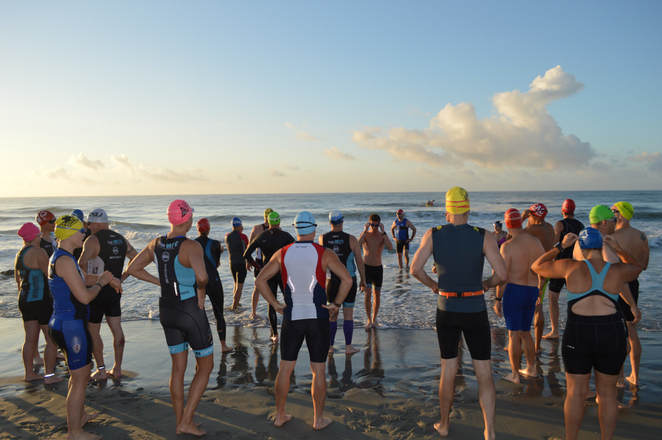
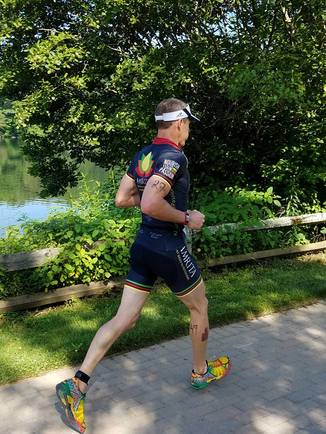
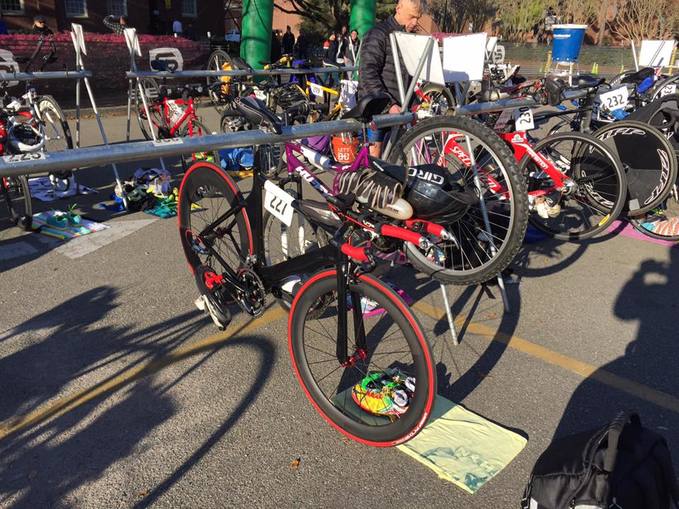
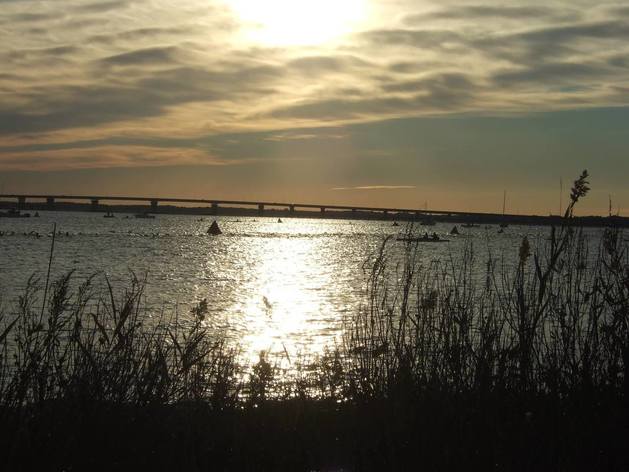
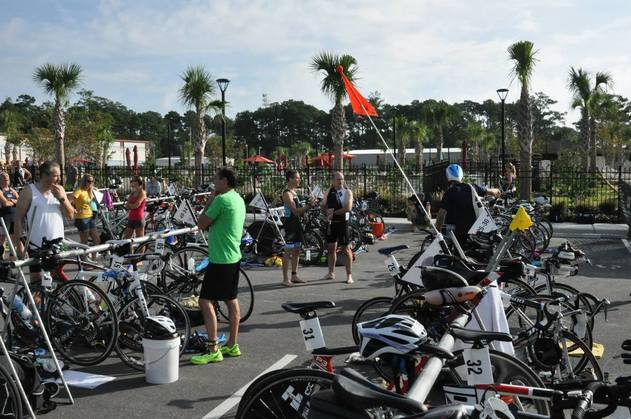
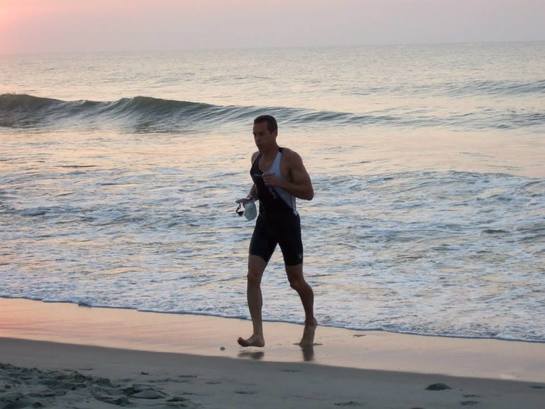
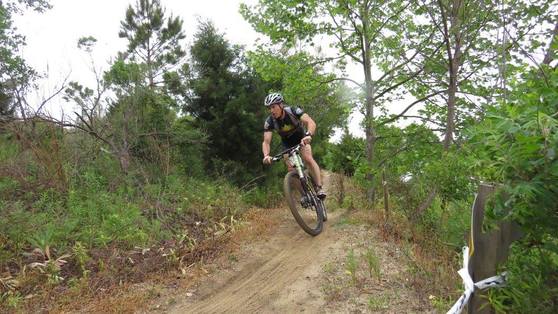


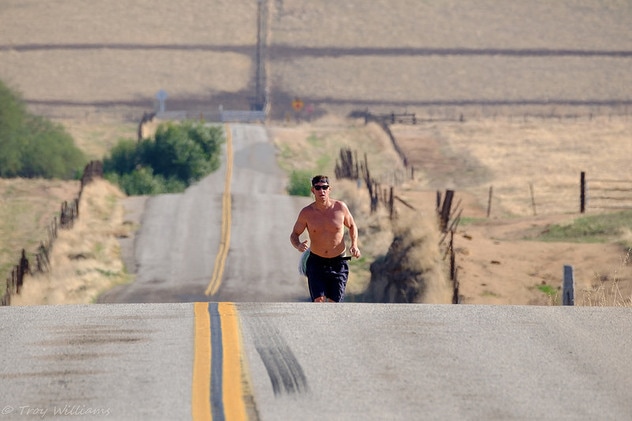
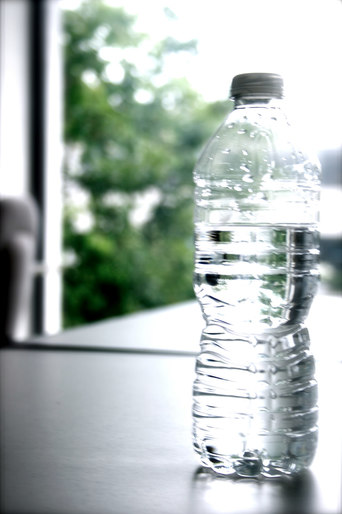
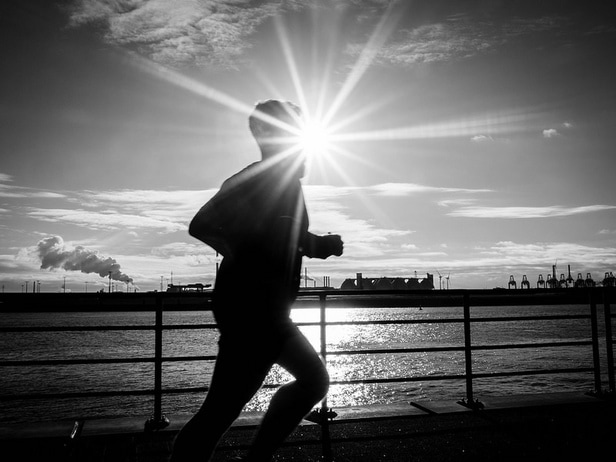
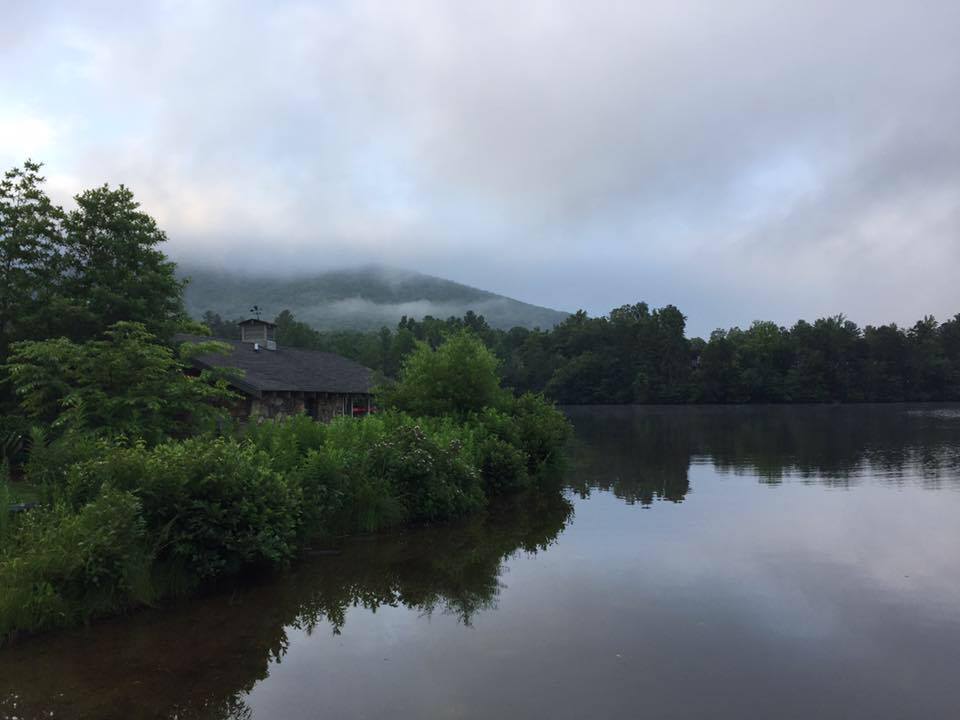
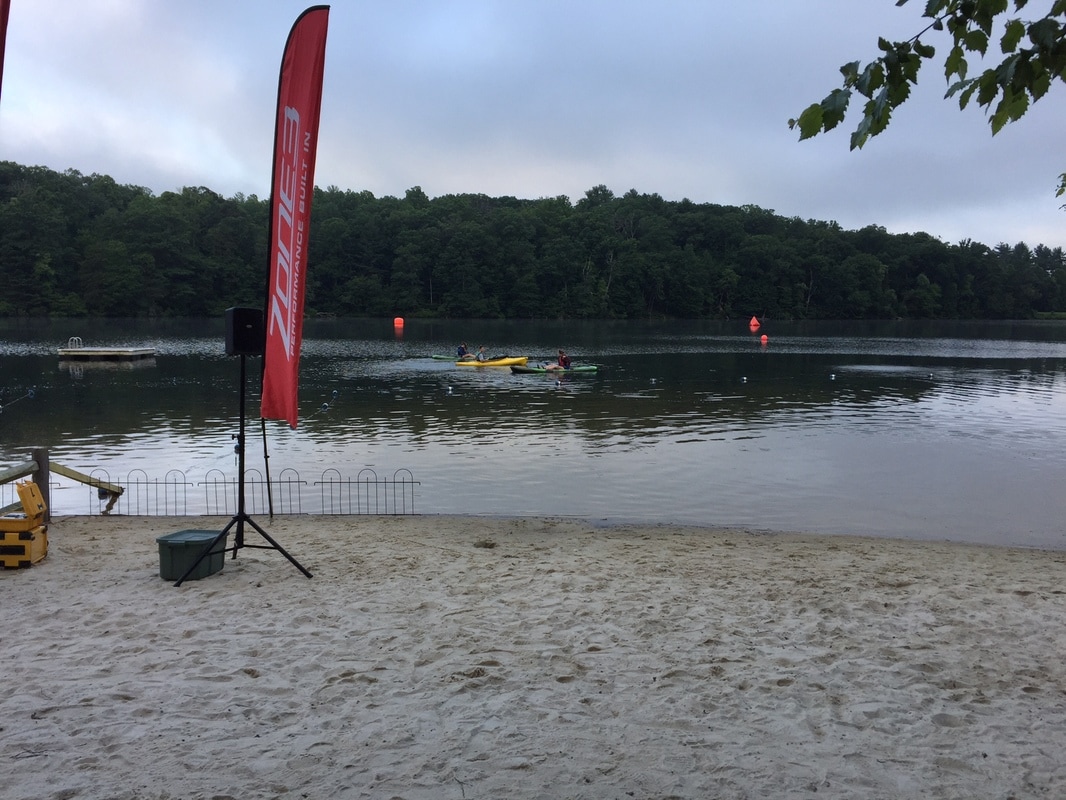
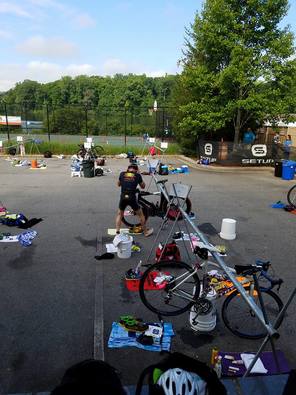
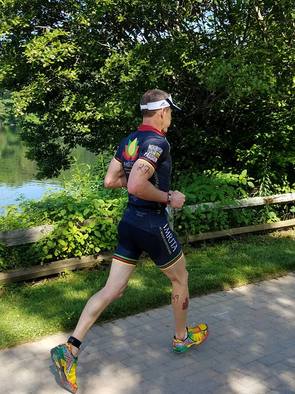
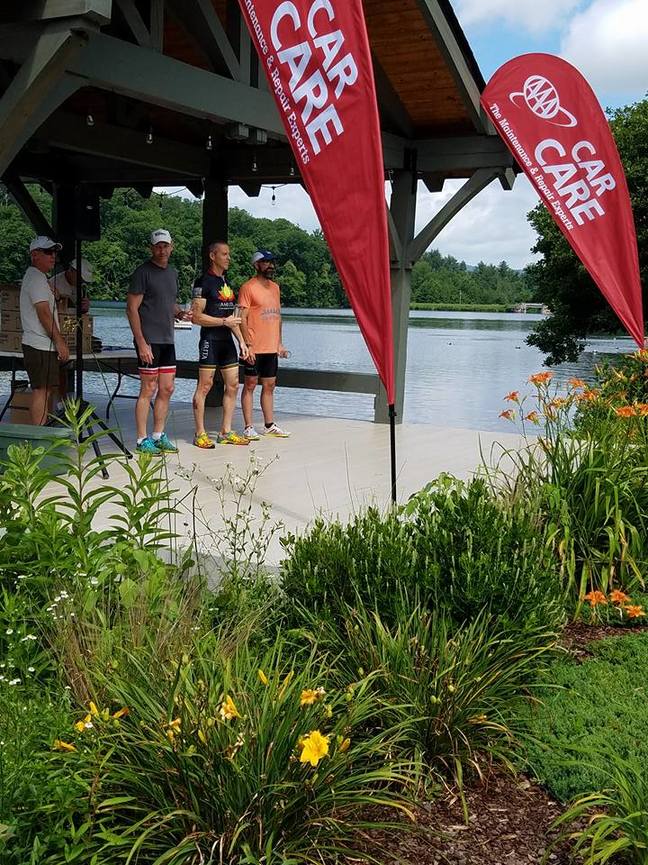
 RSS Feed
RSS Feed